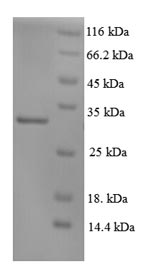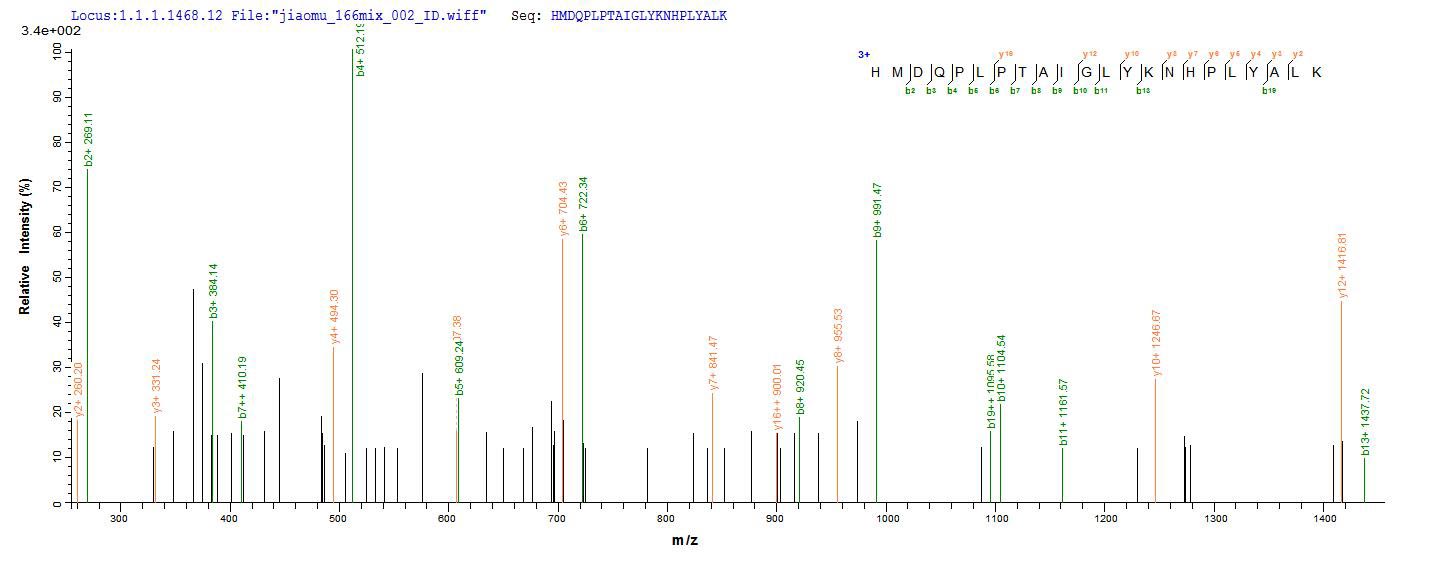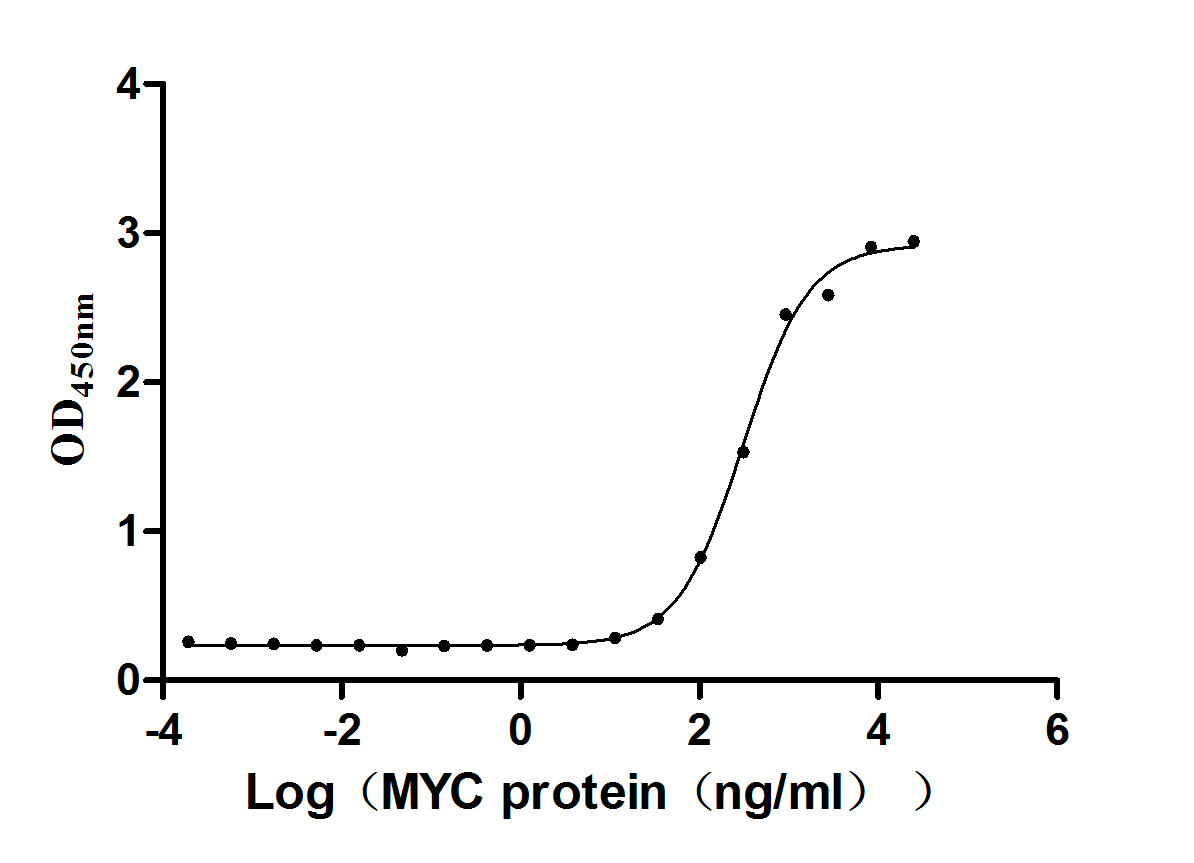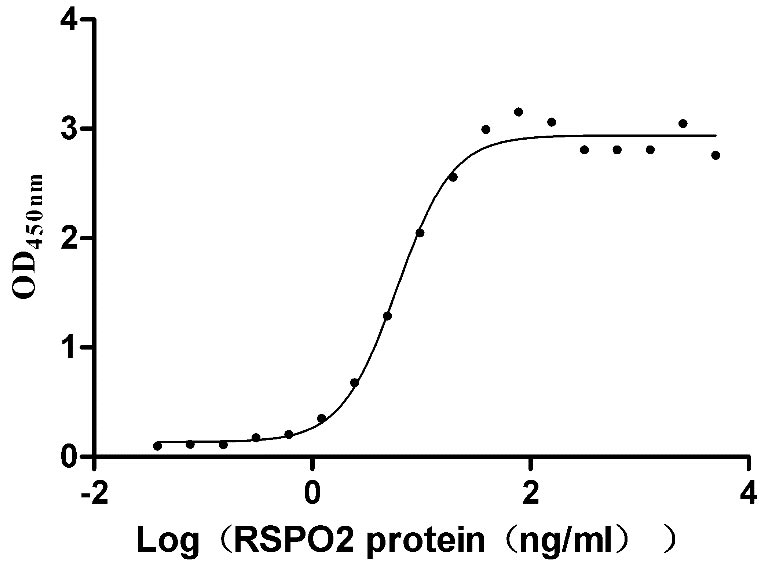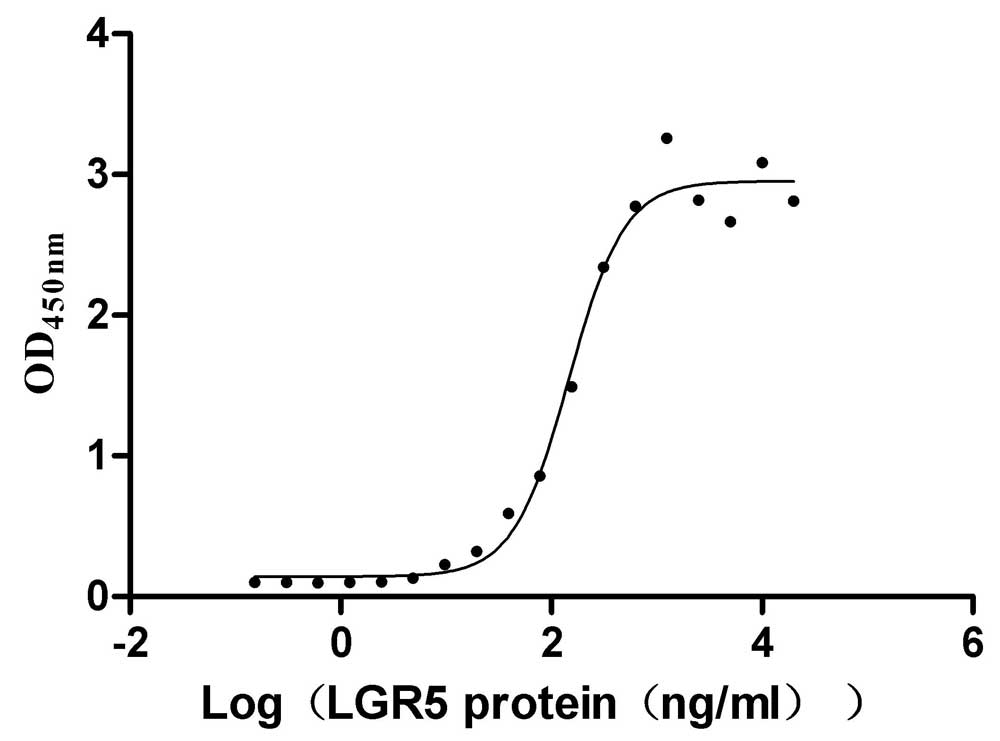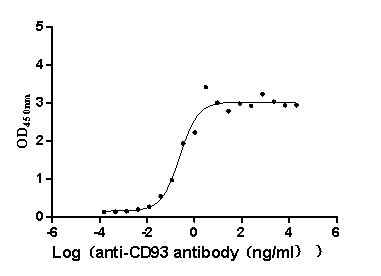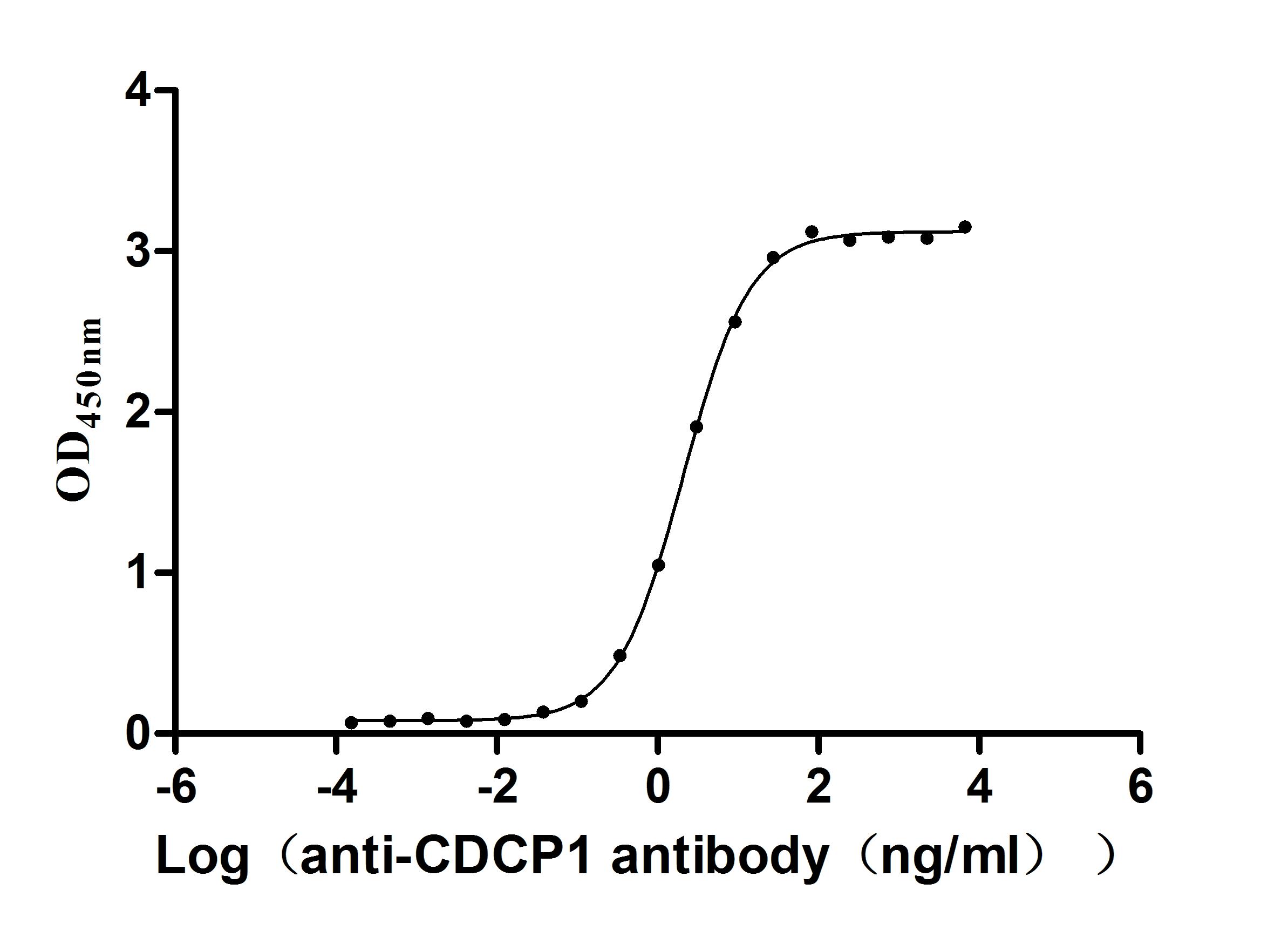Recombinant Human DNA repair protein complementing XP-C cells (XPC), partial
In Stock-
中文名称:人XPC重组蛋白
-
货号:CSB-EP026217HU
-
规格:¥1344
-
图片:
-
(Tris-Glycine gel) Discontinuous SDS-PAGE (reduced) with 5% enrichment gel and 15% separation gel.
-
Based on the SEQUEST from database of E.coli host and target protein, the LC-MS/MS Analysis result of CSB-EP026217HU could indicate that this peptide derived from E.coli-expressed Homo sapiens (Human) XPC.
-
Based on the SEQUEST from database of E.coli host and target protein, the LC-MS/MS Analysis result of CSB-EP026217HU could indicate that this peptide derived from E.coli-expressed Homo sapiens (Human) XPC.
-
-
其他:
产品详情
-
纯度:Greater than 90% as determined by SDS-PAGE.
-
基因名:
-
Uniprot No.:
-
别名:DNA repair protein complementing XP C cells; DNA repair protein complementing XP-C cells; DNA repair protein complementing XPC cells; p125; RAD4; Xeroderma pigmentosum complementation group C; Xeroderma pigmentosum group C complementing protein; Xeroderma pigmentosum group C protein; Xeroderma pigmentosum group C-complementing protein; Xeroderma pigmentosum group III; XP 3; XP C; XP group C; XP3; Xpc; XPC gene; XPC_HUMAN; XPCC
-
种属:Homo sapiens (Human)
-
蛋白长度:Partial
-
来源:E.coli
-
分子量:31.5kDa
-
表达区域:496-734aa
-
氨基酸序列SLPAASSSSSSSKRGKKMCSDGEKAEKRSIAGIDQWLEVFCEQEEKWVCVDCVHGVVGQPLTCYKYATKPMTYVVGIDSDGWVRDVTQRYDPVWMTVTRKCRVDAEWWAETLRPYQSPFMDREKKEDLEFQAKHMDQPLPTAIGLYKNHPLYALKRHLLKYEAIYPETAAILGYCRGEAVYSRDCVHTLHSRDTWLKKARVVRLGEVPYKMVKGFSNRARKARLAEPQLREENDLGLFG
Note: The complete sequence including tag sequence, target protein sequence and linker sequence could be provided upon request. -
蛋白标签:N-terminal 6xHis-tagged
-
产品提供形式:Liquid or Lyophilized powder
Note: We will preferentially ship the format that we have in stock, however, if you have any special requirement for the format, please remark your requirement when placing the order, we will prepare according to your demand. -
缓冲液:If the delivery form is liquid, the default storage buffer is Tris/PBS-based buffer, 5%-50% glycerol.
Note: If you have any special requirement for the glycerol content, please remark when you place the order.
If the delivery form is lyophilized powder, the buffer before lyophilization is Tris/PBS-based buffer, 6% Trehalose. -
储存条件:Store at -20°C/-80°C upon receipt, aliquoting is necessary for mutiple use. Avoid repeated freeze-thaw cycles.
-
保质期:The shelf life is related to many factors, storage state, buffer ingredients, storage temperature and the stability of the protein itself.
Generally, the shelf life of liquid form is 6 months at -20°C/-80°C. The shelf life of lyophilized form is 12 months at -20°C/-80°C. -
货期:3-7 business days
-
注意事项:Repeated freezing and thawing is not recommended. Store working aliquots at 4°C for up to one week.
-
Datasheet & COA:Please contact us to get it.
相关产品
靶点详情
-
功能:Involved in global genome nucleotide excision repair (GG-NER) by acting as damage sensing and DNA-binding factor component of the XPC complex. Has only a low DNA repair activity by itself which is stimulated by RAD23B and RAD23A. Has a preference to bind DNA containing a short single-stranded segment but not to damaged oligonucleotides. This feature is proposed to be related to a dynamic sensor XPC can rapidly screen duplex DNA for non-hydrogen-bonded bases by forming a transient nucleoprotein intermediate complex which matures into a stable recognition complex through an intrinsic single-stranded DNA-binding activity. The XPC complex is proposed to represent the first factor bound at the sites of DNA damage and together with other core recognition factors, XPA, RPA and the TFIIH complex, is part of the pre-incision (or initial recognition) complex. The XPC complex recognizes a wide spectrum of damaged DNA characterized by distortions of the DNA helix such as single-stranded loops, mismatched bubbles or single-stranded overhangs. The orientation of XPC complex binding appears to be crucial for inducing a productive NER. XPC complex is proposed to recognize and to interact with unpaired bases on the undamaged DNA strand which is followed by recruitment of the TFIIH complex and subsequent scanning for lesions in the opposite strand in a 5'-to-3' direction by the NER machinery. Cyclobutane pyrimidine dimers (CPDs) which are formed upon UV-induced DNA damage esacpe detection by the XPC complex due to a low degree of structural perurbation. Instead they are detected by the UV-DDB complex which in turn recruits and cooperates with the XPC complex in the respective DNA repair. In vitro, the XPC:RAD23B dimer is sufficient to initiate NER; it preferentially binds to cisplatin and UV-damaged double-stranded DNA and also binds to a variety of chemically and structurally diverse DNA adducts. XPC:RAD23B contacts DNA both 5' and 3' of a cisplatin lesion with a preference for the 5' side. XPC:RAD23B induces a bend in DNA upon binding. XPC:RAD23B stimulates the activity of DNA glycosylases TDG and SMUG1.; In absence of DNA repair, the XPC complex also acts as a transcription coactivator: XPC interacts with the DNA-binding transcription factor E2F1 at a subset of promoters to recruit KAT2A and histone acetyltransferase complexes (HAT). KAT2A recruitment specifically promotes acetylation of histone variant H2A.Z.1/H2A.Z, but not H2A.Z.2/H2A.V, thereby promoting expression of target genes.
-
基因功能参考文献:
- XPC is an RNA polymerase II cofactor recruiting ATAC coactivator complex to promoters by interacting with E2F1. PMID: 29973595
- CC genotype for XPC A>C polymorphism is associated with the risk of squamous cell carcinoma head and neck. PMID: 29893334
- Results show that XPC deficiency leads to alterations in mitochondrial redox balance with a respiratory complex CI/CII shift as a possible adaptation to lower CI activity, but at the cost of sensitizing XP-C cells to mitochondrial oxidative stress. PMID: 28273955
- Chronic low-dose of UVB (CLUV) treatment activates p53, which corroborate with the increased level of DDB2 and XPC proteins. DDB2 and XPC recruited at chromatin bound, suggesting a more efficient cyclobutane pyrimidine dimer (CPD) recognition by NER and more efficient repair of CDP. PMID: 29448173
- Demethylation using decitabine increased XPC and apoptosis after sequential carboplatin. These results confirm that sequential decitabine and carboplatin requires further investigation as a combination treatment for melanoma. PMID: 29373959
- These findings support that loss of XPC, possibly due to chronic Cigarette smoke exposure, promotes emphysema development and further supports a link between DNA damage, impaired DNA repair, and development of emphysema. PMID: 29111769
- Poly(ADP-ribose) polymerase-1 (PARP1) interacts with xeroderma pigmentosum, complementation group C protein (XPC) in the nucleoplasmic and chromatin fractions in UV irradiated HEK293 cells. PMID: 28760956
- hospital workers as a category are at risk for genotoxic damage caused by chronic exposure to xenobiotics. The higher levels of cytogenetic damage observed among GSTT1 null, XPD 751 and XPC 939 CC homozygote subjects confirm the importance of the genetic polymorphisms analysis associated to genotoxicological studies. PMID: 28434254
- XPC Ala499Val substitution increases urinary bladder cancer risk, but Lys939Gln appears to be neutral. (Meta-analysis) PMID: 27246180
- low XPC and global genome repair have roles in reduced repair of UVB-induced DNA damage in melanoma PMID: 27487145
- Several mutations in the two parts of the central "crest" of the arrestin molecule, middle-loop and C-loop, enhanced or reduced arrestin-3 interactions with several GPCRs in receptor subtype and functional state-specific manner. PMID: 28473198
- these studies found that carriers of the T allele of ERCC1 rs11615, XPC rs2228000 and rs50872, particularly in postmenopausal females, have an increased risk of breast cancer PMID: 27768589
- analysis confirms that XP-C patients without increased sun sensitivity develop non-melanoma skin cancers earlier than sun-sensitive XP-C patients. Reduced cellular mRNA levels are characteristic for XP complementation group C and qRT-PCR represents a rapid diagnostic tool. PMID: 27387384
- Data suggest that a common TFIIH subunit p62 recruitment mechanism is shared by UV-stimulated scaffold protein A (UVSSA) in transcription-coupled repair (TCR) and xeroderma pigmentosum, complementation group C protein (XPC) in global genome repair (GGR). PMID: 29069470
- CHD1 facilitates substrate handover from XPC to the downstream TFIIH (transcription factor IIH). PMID: 29018037
- results provide insights into an unexpected biological role of XPC in response to DNA replication stress PMID: 27794614
- Allelic variants in the gene XPC are not associated with an increased risk for developing pre-senile cataract PMID: 27248495
- XPC dissociation from the damage site could become a rate-limiting step in nucleotide excision repair (NER) of certain types of DNA adducts, leading to repression of NER. PMID: 27327897
- Histone deacetylation plays a significant role in the process of DNA damage recognition for nucleotide excision repair and the localization and functions of XPC can be regulated by acetylated states of histones. PMID: 28233440
- The risk of esophageal squamous cell carcinoma associated with XPC rs-2228000 was determined. A homozygous minor allele showed strong association with ESCC risk, especially in smokers, those in adobe houses, and drinkers of salt tea. Variant genotypes of both XPA and XPC in combination showed an increased risk towards ESCC. PMID: 26831662
- the associations between three XPC gene polymorphisms (rs2228001 A>C, rs2228000 C>T, and rs2229090 G>C) and neuroblastoma risk with 256 neuroblastoma patients and 531 healthy controls in a Chinese Han population, were investigated. PMID: 27847809
- XPC polymorphisms are associated with gastric cancer and atrophic gastritis risks. PMID: 26760766
- A chirality change in XPC- and Sfi1-derived peptides affects their affinity for centrin. PMID: 26923803
- XPC intron11 C/A polymorphism was associated with an increased risk of prostate cancer. Among non-smokers, the A/A genotype was significantly more prevalent in prostate cancer patients than in controls. PMID: 26745975
- No association between XPC polymorphisms and grades/stages of tumors, but report significant association between XPC PAT and reduction of prostate cancer risk in this group of patients. PMID: 27468562
- Structural insight into the mechanism of TFIIH recognition by the acidic string of the nucleotide excision repair factor XPC has been uncovered. PMID: 26278177
- the present study demonstrates a novel mutation in the XPC gene that may be affecting mRNA synthesis with milder phenotypes. PMID: 26227012
- XPC gene Lys939Gln polymorphism is significantly associated with increased risk of mitral chordae tendineae rupture. PMID: 26604426
- eIF3a improves ovarian cancer patients' response to cisplatin-based chemotherapy by down regulating XPC and p27(Kip1). PMID: 26213845
- Missense mutations in the XPC gene may allow partial functionality that could explain this unusual late onset XP. Atypical clinical presentation of XPC could be misdiagnosed when genetic aberrations allow partial DNA repair capacity. PMID: 26278556
- A novel role for the XPC protein in regulating APE1 and OGG1 expression and activity: XPC protein interacts physically with APE1 but not with OGG1.XPC is required for OGG1 activity. PMID: 26811994
- XPC's function in DNA quality surveillance preventing sunlight-induced skin cancer is discussed. [review] PMID: 26521083
- These data suggest that RNF111, together with the CRL4(DDB2) ubiquitin ligase complex, is responsible for sequential XPC ubiquitylation, which regulates the recruitment and release of XPC and is crucial for efficient progression of the NER reaction. PMID: 26151477
- Data show increased risk of leukemia with XPCC protein (XPC) 939Gln/Gln genotype, ERCC2 protein (XPD) 751Gln allele may be protective against chronic myeloid leukemia and acute myeloid leukemia, and no significant risk for the ERCC5 protein (XPG) gene. PMID: 25311495
- Attenuated XPC protein expression levels are not associated with genome nucleotide excision repair activity in in bladder cancer. PMID: 25927440
- Single Nucleotide Polymorphism in XPC, XPD, XRCC1, and XRCC3 were associated with risk for head and neck squamous cell carcinomas. PMID: 26001739
- SUMOylation of xeroderma pigmentosum group C protein regulates DNA damage recognition during nucleotide excision repair PMID: 26042670
- XPF and XPC expression may be a potential predictive factor for bladder cancer, and smoking can not only influence the recurrence of bladder cancer as a single factor but also aggravate the results of the XPF defect and XPC defect. PMID: 25535740
- Data show that nucleotide excision repair factor XPC-RAD23B is a target of poly(ADP-ribosyl)ation catalyzed by poly(ADP-ribose) polymerase 1 (PARP1). PMID: 26170451
- Our results confirmed that polymorphisms in XPC and XPD may be associated with the risk of colorectal cancer. PMID: 25391773
- Testing of the XPC gene in two families with four xeroderma pigmentosum affected children led to the identification of the novel mutations c.1243C>T or p.R415X and c.1677C>A or p.Y559X. PMID: 25566891
- Review/Meta-analysis: XPC polymorphisms were not risk factors for the development of colorectal cancer. PMID: 26214629
- DDB2 is protected by XPC from ubiquitination and degradation in a stochastic manner; thus XPC allows DDB2 to initiate multiple rounds of repair events, thereby contributing to the persistence of cellular DNA repair capacity PMID: 25628365
- This meta-analysis suggests that the XPC is a candidate gene for colorectal cancer susceptibility. PMID: 24947936
- XPC single nucleotide polymorphism and gene frequency in Russians, Tatars and Bashkirs. PMID: 25474887
- we found that Gln939Gln genotype was associated with significantly increased risk of lung cancer in Asian population. PMID: 24736739
- Review-Meta-analysis: XPC polymorphisms (Lys939Gln, Val499Arg, and PAT-/+) do not contribute to gastric cancer risk. PMID: 24886180
- Chromatin retention of DNA damage sensors DDB2 and XPC through loss of p97 segregase causes genotoxicity. PMID: 24770583
- The XPG rs17655 CC genotype is associated with shorter overall survival in gastric cancer. PMID: 24990617
- XPC genetic polymorphism is associated with the development of colorectal cancer. PMID: 23803084
显示更多
收起更多
-
相关疾病:Xeroderma pigmentosum complementation group C (XP-C)
-
亚细胞定位:Nucleus. Chromosome. Cytoplasm.
-
蛋白家族:XPC family
-
数据库链接:
Most popular with customers
-
Recombinant Human papillomavirus type 16 Protein E7 (E7) (Active)
Express system: E.coli
Species: Human papillomavirus type 16
-
Recombinant Human E3 ubiquitin-protein ligase ZNRF3 (ZNRF3), partial (Active)
Express system: Mammalian cell
Species: Homo sapiens (Human)
-
Recombinant Human R-spondin-1 (RSPO1), partial (Active)
Express system: Mammalian cell
Species: Homo sapiens (Human)
-
Recombinant Macaca fascicularis CD93 molecule (CD93), partial (Active)
Express system: Mammalian cell
Species: Macaca fascicularis (Crab-eating macaque) (Cynomolgus monkey)
-
Recombinant Macaca fascicularis CUB domain containing protein 1 (CDCP1), partial (Active)
Express system: Mammalian cell
Species: Macaca fascicularis (Crab-eating macaque) (Cynomolgus monkey)
-
Recombinant Mouse Cadherin-6(Cdh6),partial (Active)
Express system: Mammalian cell
Species: Mus musculus (Mouse)

